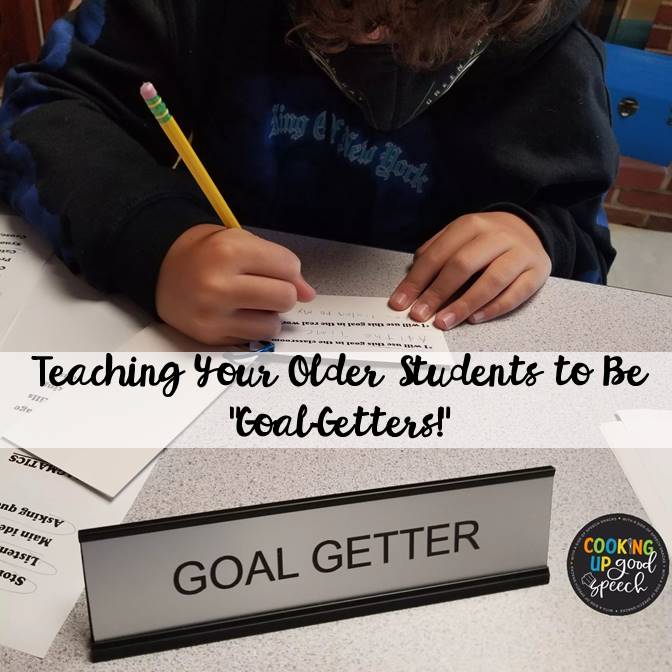
Without a doubt, establishing a rapport with our students is the most important first step toward a successful year with new and returning students. However, after we’ve played “Two Truths and a Lie,” “Would You Rather?” or some other “getting-to-know-you” icebreaker, teaching them to understand WHY they need to attend speech/language therapy is the most important next step. It’s a little disheartening when I ask my new student, “What did you do in speech at your last school?” and their response is “I have no idea,” “I can’t remember,” “All we ever did was play games.” Very few students can actually tell me what areas of communication they were focusing on or any specific skill or activity that they addressed. I’m sure the previous SLP worked hard to address my student’s communication goals. In fact, maybe they were so good at making their therapy sessions fun, that their students didn’t even realize they were working to improve their articulation, vocabulary, and inferencing skills!
That’s why I spend the beginning of the school year getting my students familiar with their speech and language goals. It’s so important for my older students, in particular, to take OWNERSHIP of their communication needs so that they can attach MEANING, PURPOSE, and a REASON to their therapy sessions. This is an activity you can review and revisit throughout the year, especially if you find your students losing interest, not showing up, or talking negatively about having to attend–and let’s face it, if you teach the big kids, you’ve experienced these negative behaviors and reactions from a student or two!
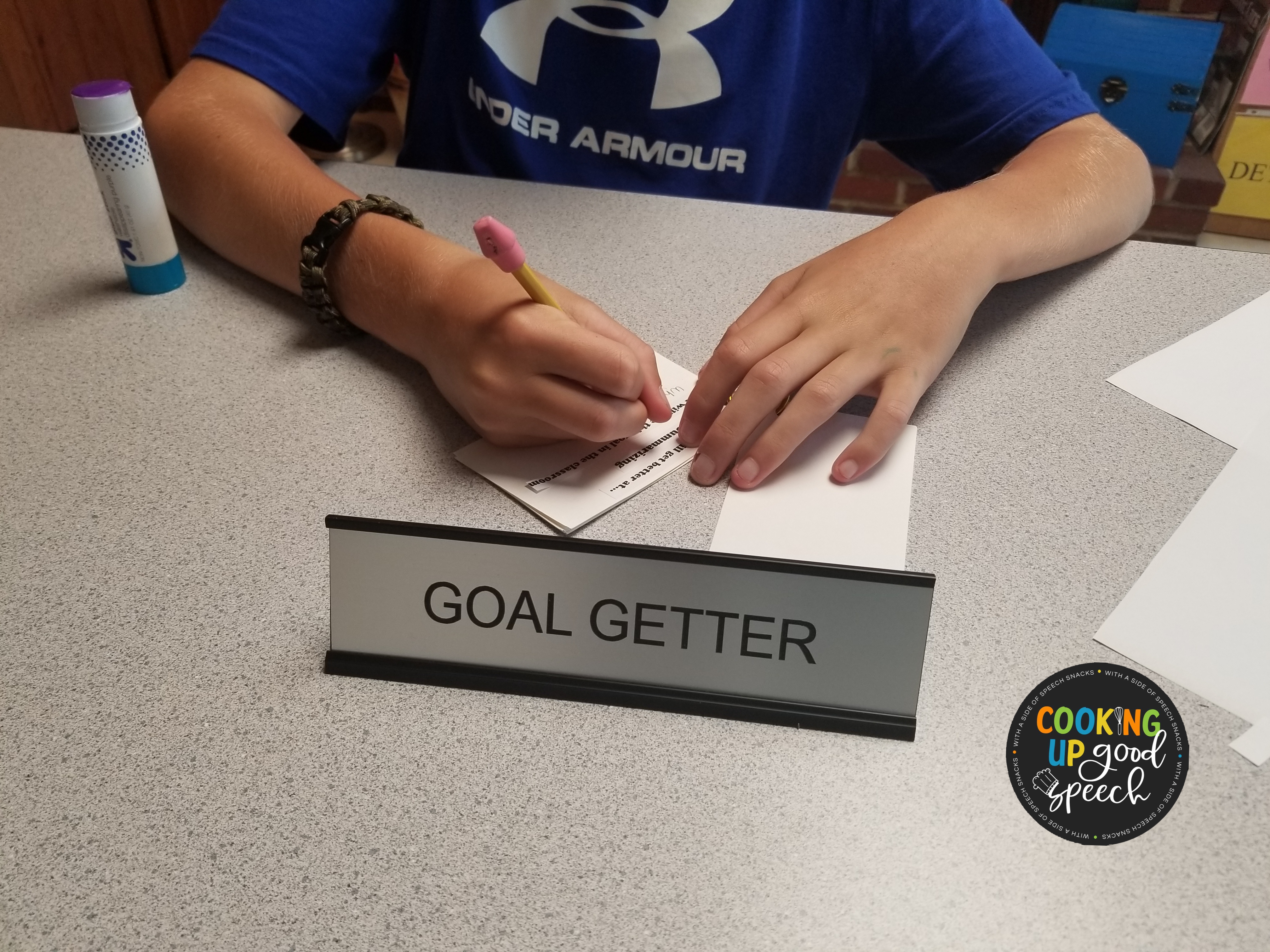
I purchased this GOAL GETTER desk placard a couple of years ago at Target. I usually keep it on my home office desk for personal inspiration, but at the beginning of the school year, I like to bring it to work so my students can experience some “goal-getting” vibes too!
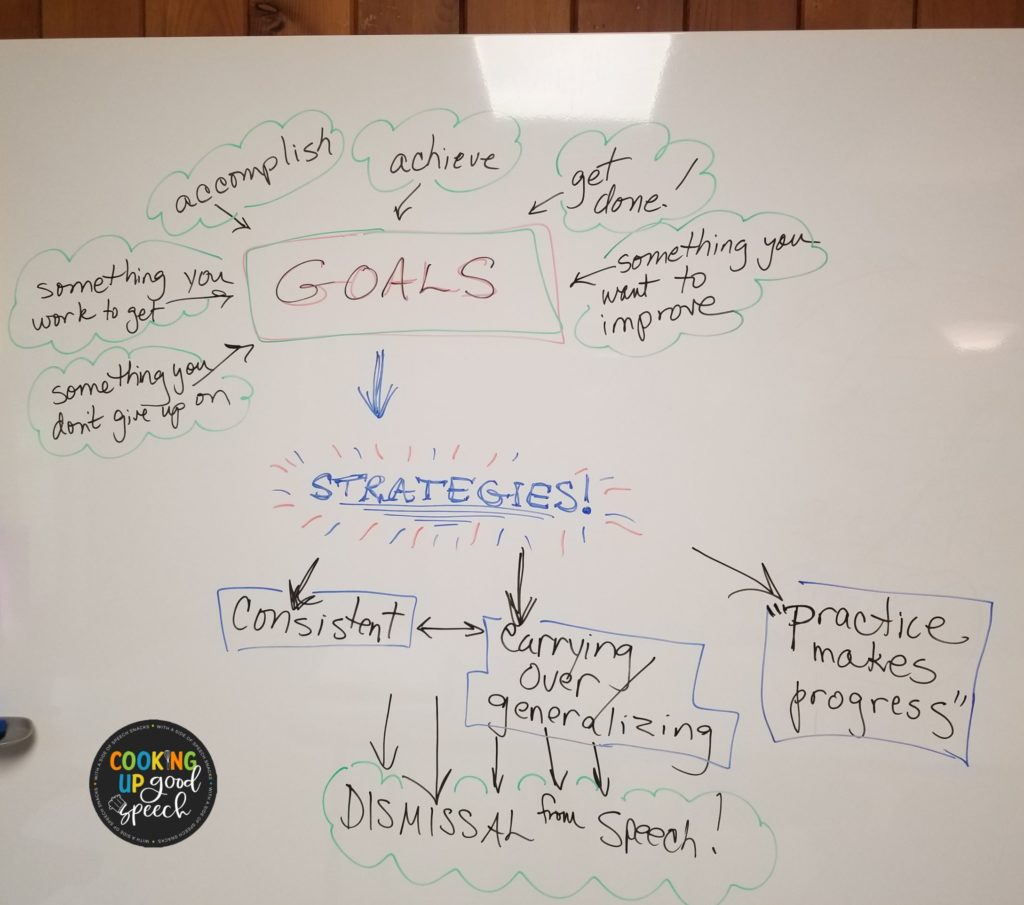
I use my whiteboard to write down and brainstorm ideas about two key words : GOALS and STRATEGIES. Above is the schematic we created this year. My students did a fantastic job coming up with all the ways they define goals—>” something you don’t give up on,” “something you work to get,” “something you want to improve,” “get done,” “accomplish,” “achieve.” I tell them that in order to reach their goals, they need strategies to help them get there. I tell them that the strategies need to be CONSISTENT, need to CARRY OVER/GENERALIZE outside of the speech therapy setting, and require lots of PRACTICE (I like to convey the message that “Practice makes Progress” (not perfect!) This message also encourages a growth mindset, which is so crucial when working with older students! Only then, can we consider DISMISSAL from speech services.
To really get this point across, I ask my students to tell me about a personal goal they have set or achieved (generally related to an area of high interest.) Many of my students play sports, video games, or have a hobby that can be applied. We define the goal they have for that activity, then discuss the specific strategies they need to utilize in order to make that goal a reality. Once we have discussed this idea on a “personal goal” level, we transition into talking about their SPEECH and LANGUAGE goals.
This is when I take out a copy of the speech and language goals from their IEP for quick reference. We get to work creating and assembling a set of note cards with their speech/language goals, in relatable terms. For this activity, you will need index cards, a hole punch, a glue stick, and binder rings.
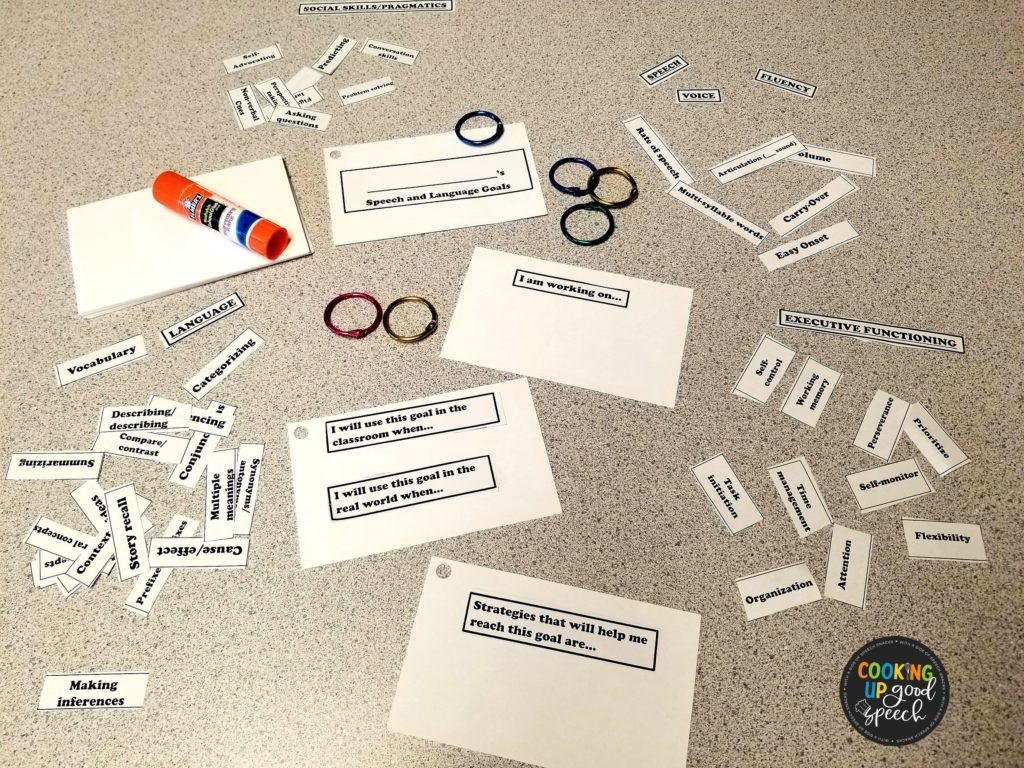
I created a printout that you can use to create goal cards with your students. ENTER THE PASSWORD: Apple Pie in the box below to access the printable goals sheets.
Use as many note cards as you feel necessary and since you are hole punching these and attaching them with a binder ring, you can focus on one or two goals now and add more goals cards as the year progresses.
On the front of the first card, cut out the box : ______________________’s Speech and Language Goals
On another card ask your students to pick out and glue the sentence starter they prefer:
- I would like to improve….
- I want to get better at….
- I am working on….
Using the goals bank sheet, which includes key target areas from speech, language, pragmatic, executive functioning, I help them choose the ones that matched their IEP goals. They cut out the appropriate terms and glue those under the sentence starter. On the back of card #2 they can cut out and glue the sentence starters:
- “I will use this goal in the classroom when…”
- “I will use this goal outside of school when…”
- “The strategies I need to use to achieve this goal….”
We discuss these sentence starters and write some thoughts about how to finish each. I give them plenty of assistance with answering each of the sentence starters and naming/writing/explaining the strategies we will be using to achieve their goals.(i.e.: EET, vocabulary rating scales, visualizing, small talk topics, reauditorizing, chunking, graphic organizers). I know you already have many of these strategies in your toolkit!
This activity will hopefully help increase their AWARENESS and APPRECIATION for attending therapy and make them more METACOGNITIVE in their understanding of their communication needs. I hope this activity gets them more INVESTED and INTERESTED in their weekly therapy sessions! Here’s to a great GOAL GETTING school year ahead!
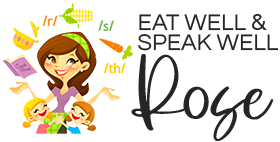










Leave a Reply